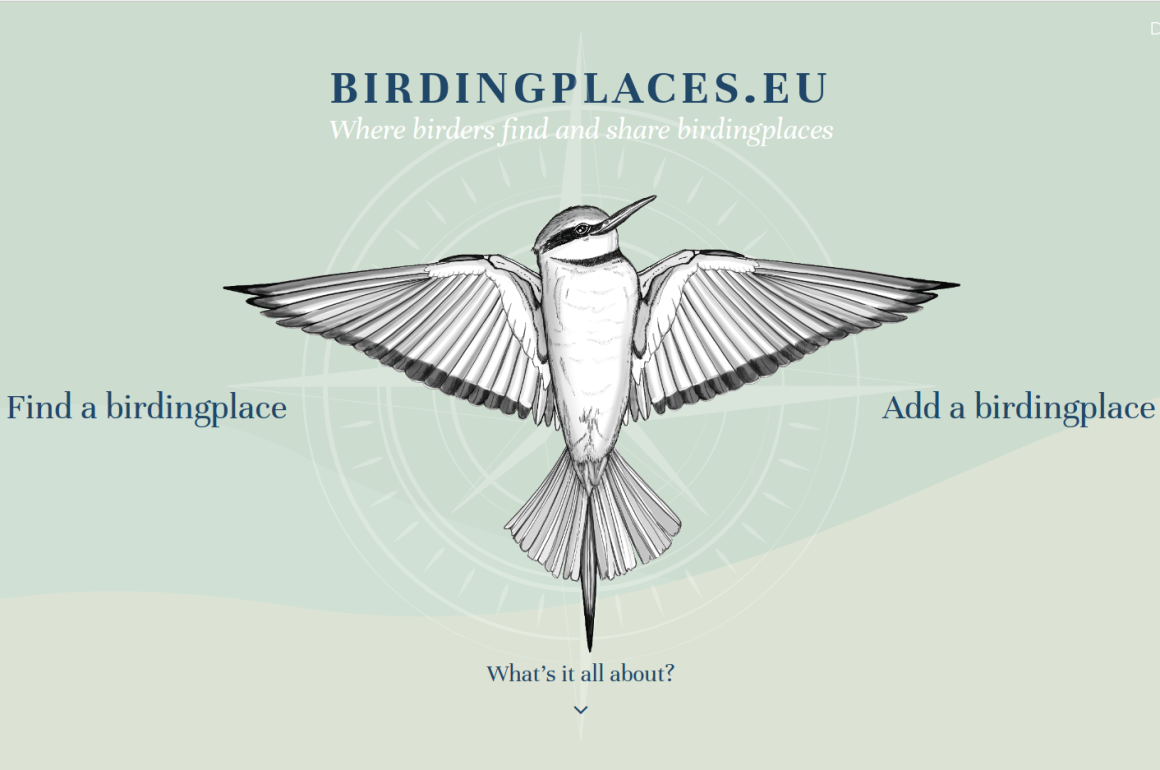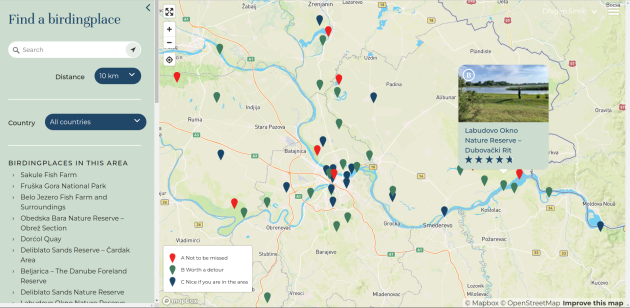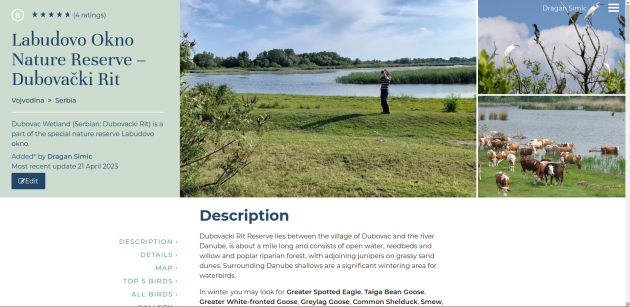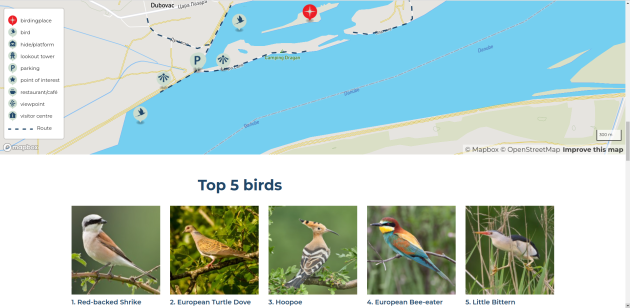
Before starting Birdingplaces.eu, Chris van der Heijden worked for BirdLife in The Netherlands. During his birding travels through Europe, he came up with the idea for Birdingplaces: why was it so hard to get good birding info in most countries? Would it be possible to unite European birders online and create a site guide for birding in Europe? Yes, it was possible. That’s how Birdingplaces was born in 2019.
Since I entered my first site guide (for Beljarica) in the very next year, 2020, with some 50 more in the meantime, I’ll go through the typical site page. Every site guide starts with a status, from an absolute must to nice if you are nearby, followed by a 5-star system rating.
Then comes the Description of the area (e.g. habitats and birds to look out for). How detailed the description is depends largely on author’s choice and knowledge of the area, and it varies a lot among the areas and among the authors. In addition, for some sites, usually the larger reserves, Birdingplaces mostly gives you more of a general idea, while the smaller sites tend to be described in more detail.

The next field is Access. It is not clear whether it refers to getting there or to moving around within the area, so unless the second is self-explanatory, I usually explain both.
The next section is a table where an author of a site guide ticks all that apply under the following: Terrain and Habitat (e.g. Forest, Wetland, Mud flats, etc.), Conditions (e.g. Open landscape, Dusty), Circular trail (Yes/No), Is a telescope useful, Good birding season and the Best time to visit, Route (e.g. Wide path, Unpaved road), Difficulty walking trail, Accessible by (Foot, Car), Birdwatching hide / platform (Yes/No), and Links (where I usually add the eBird checklist page).
Then comes a link to a wider map, showing the nearby birding areas, followed by an embedded map of the site depicting the route and bird hides, parking, restaurant, visitor centre, etc. For driving directions or coordinates, zoom in on the map and click on the “P” (parking) sign.

Underneath the map are the photos of 5 local specialty birds, followed by a longer illustrated, but not complete checklist (usually a few dozen more attractive species). And the page ends with a photo gallery, which I mostly use to show the landscape, habitats, road conditions or significant junctions.
Of course, this site guide may be used both at home and on location. When you arrive in an area, you can open the map of the birding area you are visiting on your phone and can easily follow the set route.
On Birdingplaces you can find thousands of areas for birding Europe and the Mediterranean. If you ever wondered what the best birding spots of Europe are, go to this page , from where you can continue to top-100 single country pages. New areas are described and added every day. Some birders from outside of Europe were quick to jump the train and show the very best of their countries, so we have quite detailed coverage of birding areas in e.g. little-visited Cuba or endemics-rich Namibia, as well as the well-known New Zealand.

What is hiding in the future? I expect an exponential growth similar to that of eBird when it went global. Actually, the right move would be to incorporate these two sites, because what is missing at eBird are hotspot descriptions, how to move around and which route to take. What is missing at Birdingplaces are complete checklists and bar charts.
Personally, I have a little publishing project of my own in mind: I am using Birdingplaces to organise my writings of Where to Find Birds Around Belgrade and am looking for a publisher. If you are in a publishing business, feel free to contact me.













This is fantastic, Dragan! Since my wife and I will apparently be traveling to Europe fairly often in the next few years, I will make much use of this project.
In fact, a group in which I participate here in central Mexico was just talking about the need for a more selective hotspot list for our area. I have mad love for eBird, but I can find no rhyme or reason to their rejection of some of my best sites, each with 150 or more species seen, and their acceptance of other sites which offer only a dozen urban species.
Who knows, we might even find a home on Birdingplaces…
Welcome to Birdingplaces. And yes, you can add places from all over the world
One way to determine the best sites in the well described areas with dense pins is to click at the navy pin on the lower left square at the map, to turn it off and reduce the noise, to be able to see those better ones more clearly. Pity eBird does not offer an option to turn off the sites with e.g. less than a hundred reported species
As a local eBird reviewer, I accept almost all hotspot proposals, often changing their proposed names (usually slightly). Those I reject as a rule are along motorways where you have no place to stop (nor the reason), basically incidental observations.
It probably depends on the location and season. In Europe, for example, where seasons are very different, different are birding schedules. In winter, it is not worth waking up very early, except to make your day as long as possible. In spring and autumn, birding whole day is still possible, while in summer, it is best to start very early with the sunrise, make a few hours break around the noon and continue in the evening.
Thanks for highlighting this site! I encourage everyone to add their spots outside of Europe – whether near home or on travel. I have contributed almost 40 places – its pretty easy – just take a few photos and write a description of where to go and bird. Let’s add birding places around the world!
Thank you, Tim.